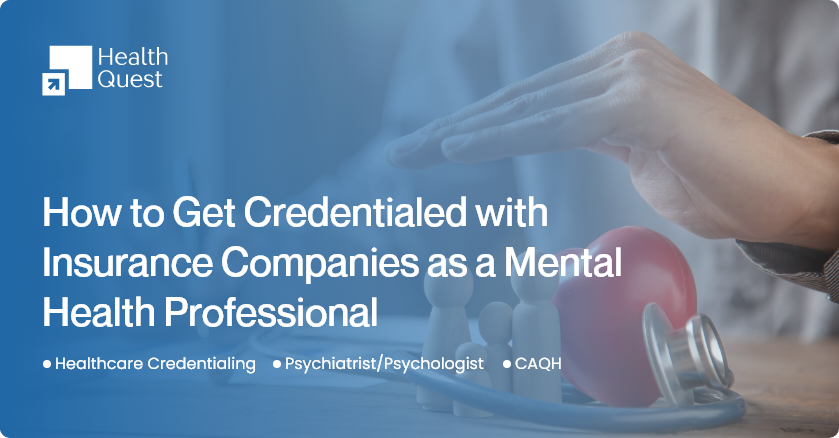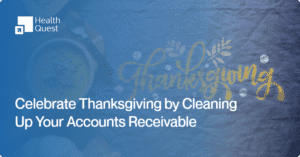Getting credentialed with insurance companies can feel overwhelming, especially when you’re juggling a growing caseload, compliance paperwork, and the demands of private practice. But with over 64% of U.S. adults preferring providers who accept insurance, and more than 60% of mental health clients relying on their insurance to access care, getting on insurance panels isn’t just a good idea; it’s often necessary for building a sustainable practice.
If you’ve ever thought, “Where do I even start?” or “Why is this taking so long?”, you’re not alone. Credentialing can take up to 120 days (or more) with some insurers, and missing one document can stall the entire process.
Why Is Credentialing Important For Healthcare Providers?
Credentialing is important because it verifies that healthcare professionals are qualified, licensed, and safe to provide care. For mental health providers, it’s also the key to joining insurance panels, expanding your client base, and getting reimbursed for your services, making care more accessible for clients who rely on insurance.
Mental Health Credentialing Process

Getting credentialed with insurance companies is one of the most important (and often frustrating) steps for launching or growing your private practice. But with the right plan in place, you can avoid delays and get in-network faster.
Meet Licensing & Insurance Requirements
Before applying, you must have a valid state license to practice independently (e.g., LCSW, LPC, LMFT, PsyD, PhD). Most insurance panels require you to carry malpractice insurance with minimum coverage (typically $1M/$3M). Make sure your resume/CV is up to date.
Apply for an NPI Number
Your National Provider Identifier (NPI) is a 10-digit number used for billing and identification. You can apply in minutes at nppes.cms.hhs.gov. You’ll need this for all insurance-related paperwork.
Set Up Your CAQH ProView Profile
Many insurance companies use CAQH to review your credentials. Sign up at proview.caqh.org, complete your profile thoroughly, and upload all requested documents (license, malpractice policy, education, work history, etc.). Don’t forget to authorize insurers to access your profile.
Decide Which Insurance Panels to Join
Research which plans are most common in your area. Common insurers include Aetna, Cigna, Blue Cross Blue Shield, UnitedHealthcare (Optum), Humana, and Medicaid/Medicare. Each company has its own process and requirements. Some may be closed to new providers and don’t hesitate to follow up and ask to be placed on a waiting list.
Submit Credentialing Applications
Visit each insurer’s provider portal or contact their Provider Relations Department. Submit all required documents, including:
- CAQH ID
- NPI number
- Resume/CV
- License
- Malpractice insurance
- Tax ID and W-9 form (if you’re a solo or group practice)
Follow Up and Track Everything
Credentialing can take 60 to 120+ days, and delays are common. Follow up every 2–3 weeks to confirm receipt and check progress. Keep a spreadsheet to track who you applied with, dates, and contact information.
Receive Contract and Effective Date
Once approved, you’ll receive a contract to sign. Carefully review your reimbursement rates, billing guidelines, and effective date (the date you can start seeing clients as in-network). Some insurers will retroactively reimburse from the application date, but others won’t.
Maintain and Update Your Credentials
Your work isn’t done after approval! You must:
- Re-attest your CAQH profile every 120 days
- Renew your license and malpractice policy on time
- Notify insurance panels of any changes to your address, license, or practice information
Common Credentialing Challenges for Mental Health Providers (And How to Overcome Them

Credentialing is a critical part of getting paid for the work you do but it can feel like a maze of paperwork, long waits, and unclear instructions. Many mental health professionals run into the same issues over and over again, often without knowing how to move forward. Here’s a breakdown of the most common obstacles, and more importantly, how you can get around them.
Slow Response Times from Insurance Panels
Waiting 60 to 120+ days just to hear back from a payer is frustrating, especially when you’re ready to see clients. Some applications even go unanswered entirely. The key here is follow-up. Reach out to provider relations every 2–3 weeks, and keep a simple log of dates, names, and updates. Persistence shows you’re serious and helps push your application through the cracks.
Incomplete or Outdated CAQH Profiles
If your CAQH profile is missing documents or hasn’t been re-attested in the last 120 days, your applications can be automatically delayed or rejected. Make it a habit to check and update your profile quarterly. Keep your license, malpractice policy, and resume current and make sure everything you upload matches the information you’ve submitted to insurance panels.
Licensure or Insurance Gaps
Even a short lapse in your license or malpractice insurance can lead to major setbacks, or worse, a rejected application. To avoid this, set calendar alerts to renew early and keep digital backups of everything. Having these documents ready makes it easier to respond quickly if a payer requests proof during the credentialing process.
Closed Insurance Panels
Some insurance companies say they aren’t accepting new providers, especially in areas where the panel is already full. That doesn’t mean the door is closed forever. Ask to be added to their waitlist and follow up every few months. In the meantime, consider joining Employee Assistance Programs (EAPs) or offering out-of-network services to maintain steady client flow.
Confusing or Inconsistent Processes
Each insurance panel has different requirements, portals, and timelines. What works for one payer won’t necessarily apply to the next. This creates confusion and wasted time for solo providers. Stay organized by using a spreadsheet to track every application, required documents, contact info, and follow-up dates. If it still feels overwhelming, you might benefit from hiring a credentialing service or virtual assistant.
Reimbursement & Contract Confusion
Many providers assume they’re in-network once they’ve submitted paperwork but that’s not the case until you receive and sign the contract. Seeing clients before your effective date can lead to denied claims. Always confirm your in-network status through the insurance company’s provider directory and carefully review your contract for reimbursement rates and billing guidelines.
Key Credentialing Tips for Behavioral Health Providers
If you’re a mental health professional planning to credential with insurance, there are a few extra details you need to know. These small things often lead to big delays if missed, so let’s break them down simply:
Choose the Correct License Type
When applying, make sure your professional title matches your license, CAQH, and NPI. Common options include:
- LPC: (Licensed Professional Counselor)
- LCSW (Licensed Clinical Social Worker)
- LMFT (Licensed Marriage & Family Therapist)
- Psychologist
- Psychiatric Nurse Practitioner
- Psychiatrist
Understand Supervision Rules
If you’re newly licensed or under supervision, double-check what each insurance panel requires. Some insurers may:
- Deny applications from pre-licensed professionals
- Ask for supervision documentation
- Require your supervisor to be in-network
Stick to Your Scope of Practice
Only credentials for services you’re legally allowed to offer under your state license.
Examples:
- LPCs typically cannot perform psychological testing
- Only psychiatrists or nurse practitioners can prescribe medication
Tips for Successful Credentialing for Mental Health Providers

The credentialing process can feel tedious, but with the right approach, it becomes much more manageable. For mental health providers, staying organized and informed is key to avoiding delays and getting approved faster. Here are some essential tips to help you deal with the process smoothly.
Stay Consistent Across All Documents
Make sure your name, license number, NPI, and contact info match exactly across your CAQH profile, license, malpractice insurance, and applications. Even small mismatches can cause delays or rejections.
Keep Your CAQH Profile Updated
Insurance companies rely on your CAQH profile, so keep it current. Re-attest every 120 days and upload up-to-date documents like your license, insurance, resume, and W-9 to avoid unnecessary hold-ups.
Track Each Application
Use a simple spreadsheet to log where and when you applied, contact details, and follow-up notes. This keeps you organized and helps you stay on top of each application’s status.
Be Proactive with Insurance Panels
Always check if the panel is open before applying. If it’s closed, ask to join a waitlist and follow up regularly. Contact provider relations directly for the most accurate and updated info.
Know Your Scope of Practice
Only apply for services your license allows in your state. Trying to credential or bill outside your scope can lead to denied claims or termination from insurance networks.
Consider Professional Help
If you’re short on time or handling multiple applications, hiring a credentialing specialist can make the process easier. They’ll handle paperwork, follow-ups, and help you avoid common errors.
Final Thought
Credentialing can be challenging, but it’s a vital step in growing a sustainable mental health practice. Getting in-network expands your reach and makes care more accessible for clients who rely on insurance. Stay organized, be patient, and don’t hesitate to seek help when needed. Your future practice will thank you for it.
Ready to Get Credentialed Without the Headaches?
Let Health Quest simplify the credentialing process for you. Whether you’re just starting out or expanding your private practice, our team handles the paperwork, follows up with insurance panels, and ensures your applications are accurate and complete so you can focus on what matters most: your clients. Get in-network faster, avoid costly delays, and grow your practice with confidence.
Book a consultation now and simplify your credentialing process.




